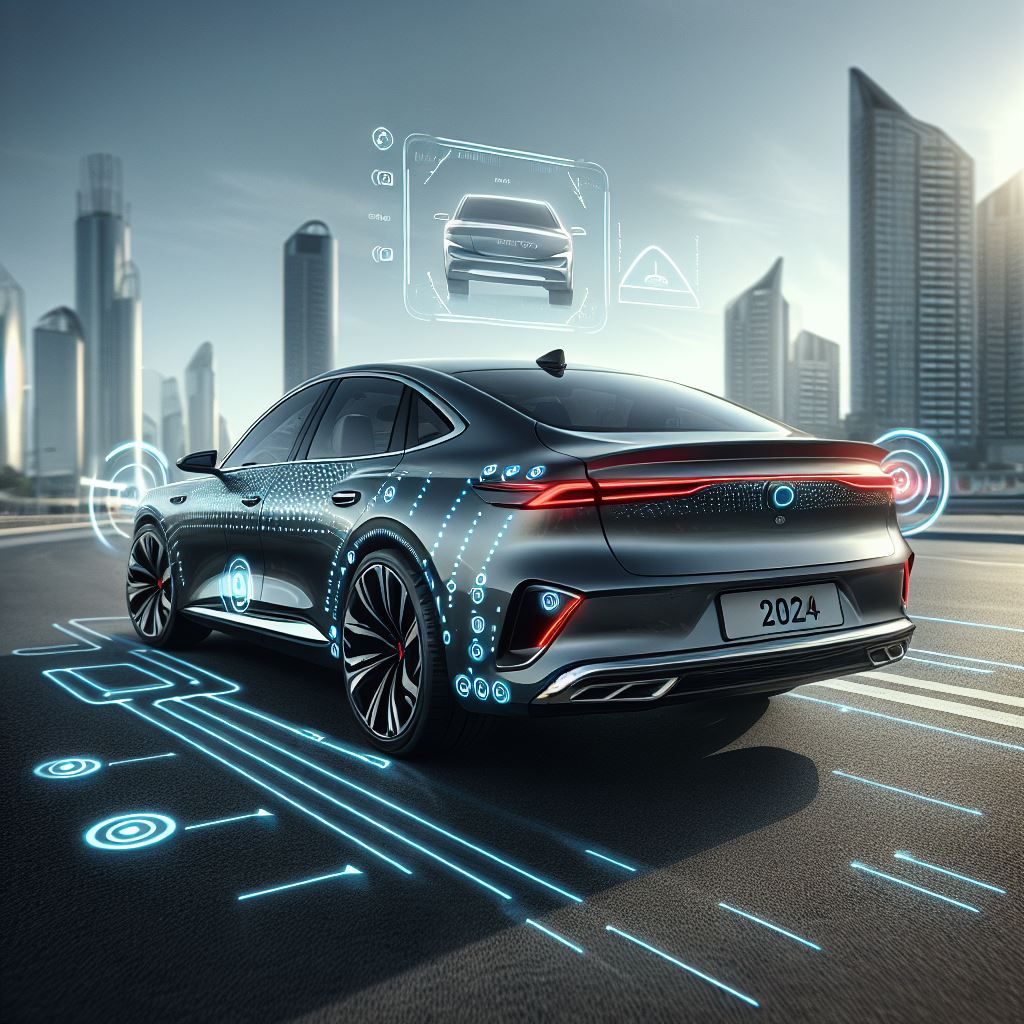Back to Car Tech Main Page
Here are 4 of the most popular Blind Spot Detection Systems (BSDS):
- Brandmotion RDBS-1500
- RAAYOO Blind Spot Camera
- Accele BSS200 Ultrasonic Blind Spot System
- Rydeen BSS1 Radar Blind Spot System

#1. Brandmotion RDBS-1500
The Brandmotion RDBS-1500 is a well-regarded aftermarket radar-based blind spot detection system, enhancing safety for vehicles from 2007 onwards. It’s recognized for a significant detection range, typically extending up to 50-75 feet, and features a dual alert system with audible beeps and distinct LED visual indicators, usually placed near the A-pillars or side mirrors.
This system offers reliable, weather-resistant performance with consistent detection accuracy, primarily utilizing advanced radar sensors (typically mounted discreetly behind the bumper) to monitor adjacent lanes. While installation is designed to be streamlined, professional assistance is often recommended for optimal integration. Its compact components ensure an unobtrusive addition to your vehicle.
Key benefits include a notable reduction in blind spot-related incidents. However, the RDBS-1500 is a premium system, often carrying a higher cost than some alternatives. Users have occasionally reported false alarms in specific scenarios or minor compatibility nuances with certain vehicle electronics, though it’s broadly compatible. Keeping the sensor areas on the bumper clean ensures optimal performance. While it significantly boosts awareness, it lacks integrated camera visuals, a feature some drivers might seek in a comprehensive safety suite.
Despite these points, the Brandmotion RDBS-1500 generally earns positive reviews for its effectiveness in making lane changes safer, making it a solid choice for drivers looking to add advanced blind spot monitoring to their vehicle
Product Summary:
- Long Detection Range: Typically 50-75 feet for comprehensive blind spot coverage.
- Audio and Visual Alerts: Dual warning system with audible beeps and LED indicators.
- Wide Compatibility: Works with most vehicles manufactured from 2007 onwards.
- Reliable Performance: Consistent and accurate detection in various weather conditions.
- Weather Resistant: Designed for durability against the elements.
- Professional Installation Recommended: While streamlined, expert setup ensures optimal function.
- Enhanced Safety: Aims to significantly reduce blind spot-related accidents.
- Compact & Discreet Design: Unobtrusive sensors and components.
- Positive User Feedback: Generally high customer satisfaction regarding effectiveness.
- Advanced Technology: Primarily utilizes radar-based sensors for monitoring.
Reasons to Reconsider:
- Higher Cost: Positioned as a premium system, it can be more expensive than some other aftermarket options.
- Potential for False Alarms: Like many radar-based systems, occasional unnecessary alerts can occur in specific traffic or environmental conditions.
- Vehicle-Specific Compatibility Nuances: While broadly compatible, some vehicle models might present minor integration challenges.
- Sensor Maintenance: Requires keeping bumper areas where sensors are located clean for optimal performance.
- Signal Interference Risk: Potential, though generally low, for interference from other electronic devices or metallic structures.
- No Camera Integration: Does not include camera visuals, which some users may prefer for a more complete visual confirmation.

#2. RAAYOO Camera
The RAAYOO Camera is a popular aftermarket solution for drivers seeking to enhance visual awareness of their vehicle’s blind spots. Known for its typically wide 170-degree view angle and clear image quality, it provides a live video feed to an in-car monitor. Many RAAYOO camera models feature effective night vision and a waterproof design, ensuring usability in various conditions. Installation is generally manageable, with versatile mounting options allowing for placement tailored to cover specific blind spot zones, often under side mirrors. Its affordability makes it an attractive option for those seeking a budget-friendly visual aid.
However, it’s crucial for buyers in 2025 to understand that the RAAYOO Camera is a passive visual tool, not an active blind spot detection and alert system. It does not provide audible warnings or distinct flashing alerts like radar or ultrasonic systems. Its effectiveness relies on the driver consistently monitoring the connected display. While it offers real-time visual feedback, it lacks recording capabilities. Regular lens cleaning is necessary for clear visibility, and display compatibility must be ensured.
Despite these limitations inherent to its nature as a camera, the RAAYOO Camera generally receives positive feedback for providing a significant improvement in visual coverage at an accessible price point, making it a solid choice for drivers who understand its function as an enhanced visibility tool.
Reasons Why (to consider for enhanced visual awareness):
- Wide View Angle: Often offers a 170-degree field of vision, significantly expanding the visible area compared to side mirrors alone.
- Good Image Quality: Many models provide clear, high-resolution images for better visibility.
- Effective Night Vision: Typically equipped with sensors or IR LEDs to offer usable visibility in low-light or nighttime conditions.
- Waterproof Design: Built to withstand various weather conditions, crucial for an externally mounted camera.
- Relatively Easy Installation: Compared to complex sensor systems, camera installation can be more straightforward, though it still requires wiring for power and video signal to a monitor.
- Affordable Visual Aid: A cost-effective way to add visual coverage to blind spot areas.
- Compact and Discreet: Cameras are usually small and can be mounted unobtrusively.
- Versatile Mounting Options: Can often be mounted under side mirrors, on fenders, or other locations to cover specific blind spots. Requires connection to an in-car display (either existing or aftermarket).
- Real-Time Visual Feedback: Provides an immediate live video feed of the monitored area.
- Generally Positive Reviews (as a camera): Customers often appreciate the added visibility for the cost.
Reasons Why Not (and important limitations):
- Visual Aid Only, No Active Alerts: Critically, it lacks audible or distinct visual alerts to warn of vehicles in your blind spot. It relies on the driver actively checking the camera display.
- Driver Dependent: Effectiveness depends entirely on the driver remembering to look at the designated monitor before changing lanes or maneuvering.
- Limited “Detection” Capability: As a camera, it doesn’t “detect” hazards in an active sense or predict collisions; it simply shows what’s in its field of view. Its effective visual range depends on camera resolution and environmental conditions.
- Potential Compatibility Issues with Displays: Requires a compatible in-dash screen with an RCA input or a dedicated aftermarket monitor for viewing the feed.
- Lens Maintenance: The camera lens needs to be kept clean from dirt, rain, or snow for optimal clarity.
- Potential for Glare or Washed-Out Images: Extreme lighting conditions (e.g., direct sun) can sometimes impact image quality, as with any camera.
- No Recording (Typically): Standard models do not offer DVR functionality for recording incidents.

#3. Accele BSS200 Ultrasonic Blind Spot System
The Accele BSS200 is a popular aftermarket ultrasonic-based blind spot system, recognized for its affordability and its dual audio-visual alerts that enhance driver awareness. It is most effective in low to moderate-speed environments, such as busy urban streets or parking lots, providing reliable detection of vehicles or obstacles within its 14-foot range. The system’s components are compact, and installation is generally more straightforward than radar-based alternatives. Its weather-resistant build helps ensure functionality across different conditions, contributing to safer lane positioning and maneuvering in closer quarters.
However, it’s crucial for buyers in 2025 to understand the Accele BSS200’s technological limitations. Due to its ultrasonic nature and short detection range, it is not well-suited for reliable blind spot monitoring during high-speed highway driving where detecting fast-approaching vehicles from a greater distance is critical. Users may experience occasional false alarms, and optimal performance requires keeping the sensors clean. While it aids awareness, it does not include camera visuals.
Despite these cons, if your primary need is an affordable system to help detect vehicles already present in your immediate blind spot during city driving or low-speed situations, the Accele BSS200 often receives positive feedback for its value and effectiveness within its designed operational scope
Reasons Why (to consider for enhanced awareness at lower speeds):
- Affordable Safety Aid: Offers a cost-effective way to add a layer of blind spot awareness compared to more expensive radar systems or factory-installed options.
- Audio and Visual Alerts: Provides a dual warning system, typically with LED indicators (often for A-pillar or dash mounting) and audible beeps when an object is detected.
- Relatively Simple Installation: Ultrasonic sensor kits can be less complex to install than radar systems, often involving mounting sensors on or drilling into bumpers and wiring to the control module and indicators.
- Compact Design: Sensors and indicators are generally small and designed to be discreet.
- Reliable Short-Range Detection: Offers consistent detection of vehicles or obstacles within its specified range (up to 14 feet).
- Weather Resistant Sensors: Designed to function in various typical weather conditions.
- Beneficial in Low-Speed Environments: Particularly useful in urban traffic, for detecting bicycles or pedestrians, or in parking lots and during lane changes at city speeds.
- Enhanced Close-Quarters Safety: Can help reduce the risk of collisions with vehicles lurking in the immediate blind spot during lower-speed maneuvers.
- Generally Positive Reviews (for its intended use): Users often find it helpful for its price point when its operational limits are understood.
Reasons Why Not (and important limitations):
- Limited Detection Range (Up to 14 feet): This short range is inherent to ultrasonic technology and means it cannot reliably detect fast-approaching vehicles from further back, making it unsuitable as a primary aid for high-speed highway lane changes.
- Primarily for Low-to-Moderate Speed Use: Its effectiveness significantly diminishes at higher highway speeds due to the limited detection distance and reaction time needed.
- Potential for False Alarms: Ultrasonic sensors can sometimes be triggered by non-threatening objects like guardrails, curbs, or heavy weather conditions.
- Vehicle-Specific Compatibility/Installation: While adaptable, some vehicle bumper designs or materials might present challenges for optimal sensor placement and performance.
- Sensor Maintenance: Requires keeping the external ultrasonic sensors clean from dirt, ice, or debris.
- Potential for Ultrasonic Interference: Less common, but strong ultrasonic noise from other sources could theoretically impact performance.
- No Camera Integration: Lacks a camera for visual confirmation of detected objects.
- Not a Substitute for Mirror Checks & Shoulder Checks: It’s an assistance system, not a replacement for vigilant driving habits.

#4. Rydeen BSS1 Radar Blind Spot System
The Rydeen BSS1 is a highly regarded aftermarket radar-based blind spot detection system, distinguished by its impressive detection range of up to 82 feet and the use of advanced microwave/radar sensor technology. This enables it to provide reliable warnings for vehicles in adjacent lanes, crucial for safe highway driving and lane changes. The system delivers clear alerts through both audible beeps and visual LED indicators. Designed for durability, its weather-resistant sensors are typically installed discreetly behind the bumper, maintaining the vehicle’s aesthetics.
While the Rydeen BSS1 is praised for its consistent performance and its contribution to reducing blind spot accidents, it represents a premium investment. Professional installation is strongly recommended to ensure accurate sensor alignment and proper integration. As with any sophisticated sensor system, occasional false alerts are possible, though its advanced processing aims to minimize these. It’s a dedicated blind spot monitoring solution and does not include camera visuals.
For drivers in May 2025 seeking a robust, long-range, and technologically advanced system to significantly enhance their situational awareness and safety during lane changes, the Rydeen BSS1 stands as a strong and effective choice, backed by positive user experiences.
Reasons Why (to consider for robust blind spot monitoring):
- Long Detection Range: Offers a significant detection area, typically up to 82 feet, crucial for monitoring adjacent lanes effectively, especially at highway speeds.
- Microwave/Radar Technology: Utilizes advanced radar sensors (commonly 24GHz for this type of system) for accurate and reliable detection of vehicles in blind spots, less prone to environmental interference than simpler technologies.
- Clear Audio and Visual Alerts: Employs a dual warning system, usually featuring distinct LED indicators (often placed on A-pillars or adaptable to mirrors) and audible alerts to warn the driver of hazards.
- Weather Resistant: Sensors are designed to function reliably across various weather conditions.
- Professional Installation Recommended: While components are compact, achieving optimal performance and safety with radar systems necessitates precise sensor alignment and electrical integration, making professional installation highly advisable.
- Discreet Integration: Radar sensors are typically mounted behind the vehicle’s bumper facia, ensuring a clean, factory-like appearance.
- Enhanced Driving Safety: Designed to significantly reduce the risk of blind spot-related collisions during lane changes.
- Reliable Performance: Known for consistent detection accuracy when properly installed and calibrated.
- Generally Positive Reviews: Often receives high customer satisfaction for its effectiveness and advanced capabilities.
- Broad Vehicle Compatibility: Engineered to be adaptable to a wide range of vehicle makes and models from 2007 onwards.
Reasons Why Not (and important considerations):
- Higher Cost: As a premium radar-based system, it generally carries a higher price tag than ultrasonic BSMs, parking aids, or simple camera systems.
- Potential for False Alerts: While advanced algorithms aim to minimize them, occasional false alerts can occur due to complex traffic situations or specific environmental factors.
- Vehicle-Specific Integration: Although broadly compatible, seamless integration with every vehicle’s unique electronics and bumper design can sometimes present challenges, reinforcing the need for skilled installation.
- Sensor Area Maintenance: Requires keeping the bumper areas over the concealed radar sensors clean from heavy mud, snow, or ice for optimal performance.
- Minimal Signal Interference Risk: Well-designed radar systems are generally robust, but extreme electromagnetic interference could theoretically be a factor in rare instances.
- No Camera Integration: This system focuses on sensor-based detection and alerts, lacking visual camera feeds that some users might also desire.
- Primarily Blind Spot Detection: While excellent for its core function, some users in 2025 might also be looking for integrated Rear Cross-Traffic Alert (RCTA), which may or may not be standard with this specific BSS1 kit (some advanced radar systems offer it).

